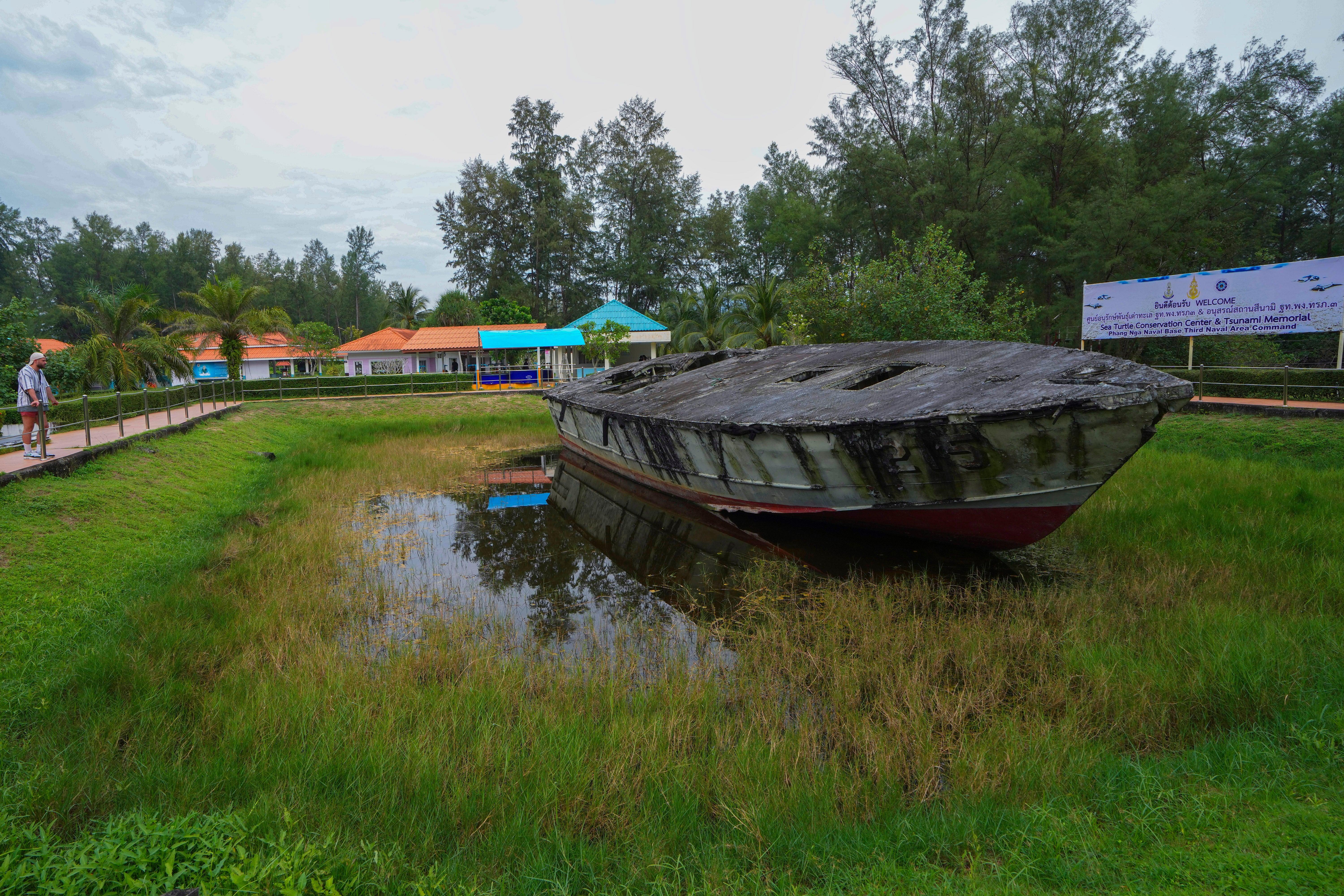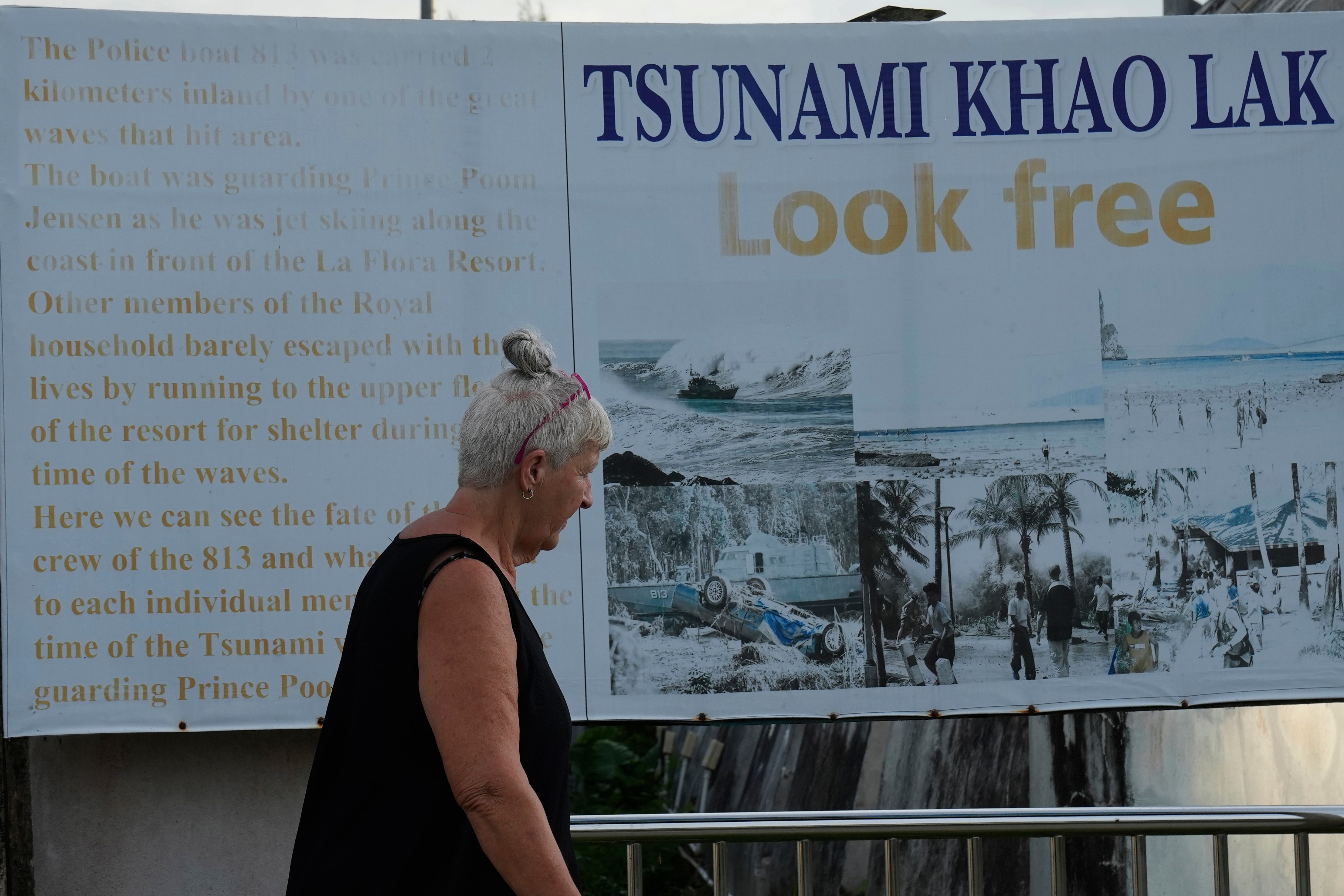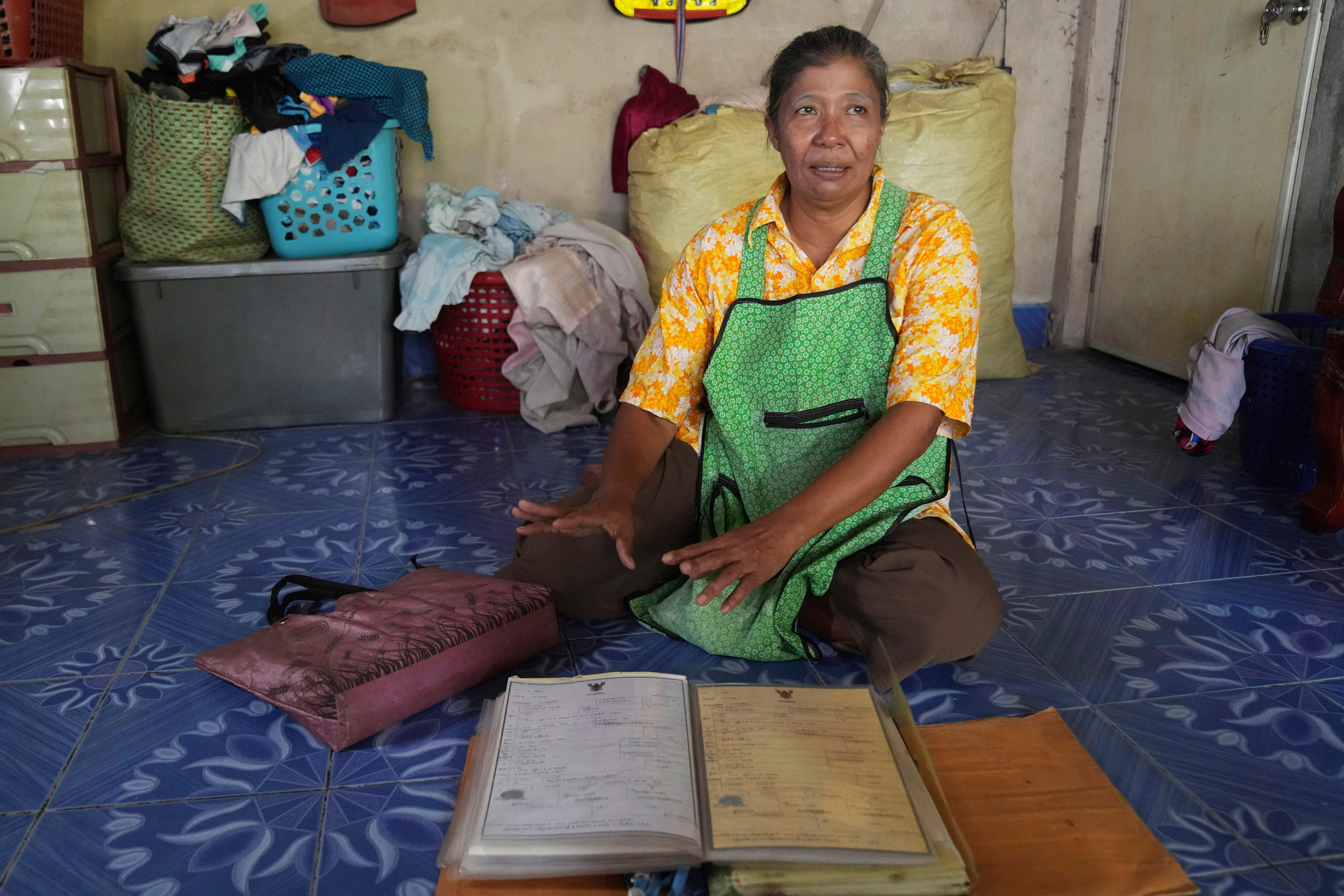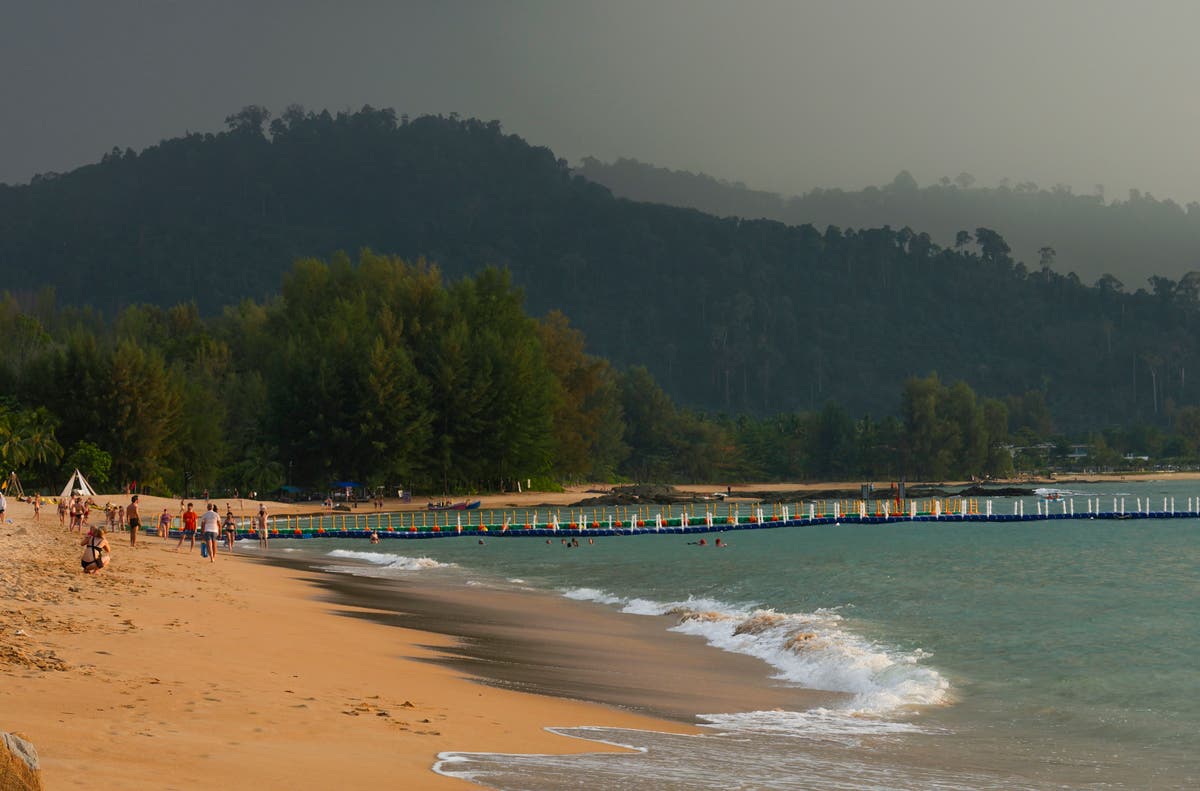The 20-year-old freshman student was still asleep that Sunday morning at the family’s house on the Andaman Sea coast of southern Thailand when her mum, sensing something wasn’t right, woke her up saying they needed to leave right away.
The day is forever seared in Neungduangjai Sritrakarn’s memory: Dec. 26, 2004, the day the deadly Indian Ocean tsunami struck across South and Southeast Asia, after a 9.1 magnitude earthquake off the west coast of Indonesia’s Sumatra island.
It was one of modern history’s worst natural disasters.
Neungduangjai’s mom had noticed a strange pattern of whitecaps on the sea, just as a relative who returned from a fishing trip came by to warn them. They grabbed all the family members’ essential documents and hopped on motorbikes.
Within minutes, Neungduangjai, her mother, father, brother and sister were speeding away, trying to get as far as they could from their village of Ban Nam Khem. Looking back, Neungduangjai saw a surging wall of water, taller than her home, moving toward shore from far away.
She had never seen anything like it.
They got about 3 kilometers (1.8 miles) away when the wall of water crashed into the shore of Phang Nga province and caught up with them, knocking them off their bikes. The water was dark, sweeping all kinds of objects, man-made and natural.

Nuengduangjai pulled herself to her feet but could barely stand in the moving mass — the water was almost up to her knees.
She didn’t know at the time that the tsunami had hit a dozen countries, leaving about 230,000 dead, around a third of them in Indonesia. Some 1.7 million people were displaced, mostly in the four worst-affected countries: Indonesia, Sri Lanka, India and Thailand.
Along Thailand’s Andaman coast, at least 5,400 people were killed and some 3,000 remain missing to this day, according to the Thai government.
The shrimp farm where Neungduangjai’s family worked and lived was wiped out.
In its place today is a thriving bar and restaurant — the fruits of Neungduangjai’s rebuilding efforts — with a porch looking out to a beautiful sea view. A view she said wouldn’t be there if not for the tsunami that destroyed parts of the coast.
In Phang Nga, life has been rebuilt and the tourists are back — on the surface, all is fine.
Neungduangjai, who was home from her studies in Bangkok for the New Year break when the tsunami hit, said her immediate family survived but they lost five relatives, including her grandparents. One of her uncles was never found.

After a week of staying with relatives in nearby Ranong province, she went back. She remembers the stench of death and how she thought everything had been moved from its original place.
“There were bodies everywhere,” she said. “When I returned to the village, I couldn’t recognize a single thing. … Everything was different.”
Though tourists have little reason to notice them, reminders of the tragedy abound today in Phang Nga — signs showing an evacuation route, tsunami shelters near beach areas, several memorials and museums displaying wreckage and photos that tell the story of that day.
Sanya Kongma, the assistant to Ban Nam Khem’s village chief, said development has come a long way, and that the quality of life in the village is good compared to 20 years ago.
But the haunting memories and the trauma of what they lived through are very much present and fear is never far away, he said.
“Even now … if there’s an announcement from the government on TV, or whatever, that there’s an earthquake in Sumatra, everyone will be spooked,” he said.
About once a year, a siren blares off in a tsunami evacuation drill. But what is meant to reassure residents of their safety can cause some survivors to relive their pain.

Somneuk Chuaykerd lost one of her young sons to the tsunami while she was out at sea, fishing with her husband.
The 50-year-old still lives in the same spot, the sea right at her backyard. In evacuation drills, she has learned to keep an emergency tote bag with all important documents. The bag is in her bedroom, along with a photo of the little boy she lost.
But the siren freezes her up every time and sends her heartbeat racing. “I don’t know what to do. I don’t know what to grab,” she says. “It’s so scary.”
But she has made peace with the tragedy and has no plans to move away.
“I live by the sea. This is my living. I don’t have anywhere else to go,” she said.
As for Nuengduangjai, for years after the tsunami, every time she looked at the sea she would get a panic attack. A roaring sound of waves haunted her in her sleep.
She chose to move back home after college and make a living right next to the sea. She is proud of her bar and restaurant.
“I’m still scared, but I have to live with it, because it’s my home,” she said. “Some people moved away, but I did not. I’m still here.”
